Albany, the vibrant capital of New York State, stands as a testament to its rich historical significance and unwavering commitment to cultural heritage, education, and economic development.
From its pivotal role in the American Revolution to its flourishing art scene and renowned research institutions, Albany has left an indelible mark on the tapestry of American history and continues to shape its future.
Historical Significance
Albany, the capital of New York State, holds a prominent place in American history. Its strategic location at the confluence of the Hudson and Mohawk rivers made it a pivotal center for trade, transportation, and military operations.
Albany was founded in 1624 by Dutch fur traders as Fort Orange. It became a major trading post for the fur trade with Native American tribes. In 1664, the British took control of the colony and renamed it Albany after the Duke of Albany.
Albany in the American Revolution
During the American Revolution, Albany played a crucial role as a strategic hub for military operations. It served as a supply depot and a gathering point for troops. In 1777, General Philip Schuyler led the Continental Army from Albany to engage in the Battle of Saratoga, a turning point in the war.
Historical Figures
Albany is associated with several prominent historical figures, including:
- Peter Stuyvesant, the last Dutch governor of New Amsterdam, who established Fort Orange.
- Philip Schuyler, a Continental Army general who played a key role in the American Revolution.
- Elizabeth Cady Stanton, a leading figure in the women’s suffrage movement.
Cultural Heritage
Albany is a vibrant cultural hub with a rich art scene, diverse neighborhoods, and significant contributions to music, theater, and literature. From renowned art museums to bustling music venues and historic theaters, the city offers a wide range of cultural experiences that reflect its unique history and diverse population.
Art and Cultural Institutions
Albany is home to several notable art museums, including the Albany Institute of History & Art, the New York State Museum, and the University Art Museum at the University at Albany, SUNY. These institutions showcase a diverse collection of artwork, ranging from classical to contemporary pieces, and host exhibitions that explore various themes and artistic movements.
In addition to museums, Albany has a thriving independent art scene with numerous galleries and studios showcasing the work of local and emerging artists. These spaces provide opportunities for artists to connect with the community and exhibit their creations.
Albany, New York is a historic city with plenty to offer visitors. While there are many great things to see and do in Albany, one of the best ways to experience the city is to take a hike on one of its many nearby trails.
Best hiking trails in the US are found in and around Albany. Whether you’re looking for a challenging hike or a leisurely walk, there’s sure to be a trail that’s perfect for you.
Music, Theater, and Literature
Albany has a vibrant music scene with a diverse range of venues hosting live performances. The Palace Theatre is a historic landmark that hosts Broadway shows and touring productions, while The Egg is a contemporary performing arts center that presents a wide variety of music, dance, and theater performances.
The city also has a strong literary tradition. Albany is the birthplace of the Pulitzer Prize-winning author William Kennedy, and the home of the New York State Writers Institute at the University at Albany, SUNY, which hosts readings, workshops, and conferences featuring renowned authors.
Diverse Neighborhoods
Albany is a city of diverse neighborhoods, each with its own unique cultural influences. The South End is known for its historic architecture and vibrant African American community, while the Pine Hills neighborhood is home to a large Italian American population. The city also has a growing Latino community, and the North Albany neighborhood is home to a thriving Vietnamese community.
These diverse neighborhoods contribute to Albany’s rich cultural tapestry, with each community bringing its own traditions, festivals, and culinary experiences to the city.
Education and Research
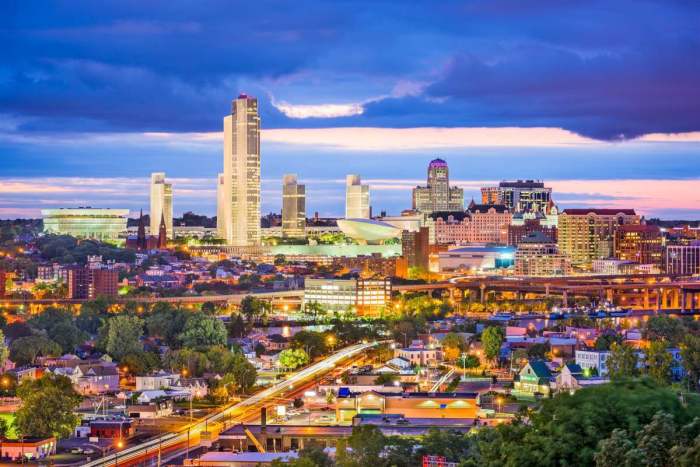
Albany is home to a thriving higher education sector, with several renowned universities and colleges contributing to the city’s intellectual and cultural landscape. These institutions play a pivotal role in advancing research, fostering innovation, and shaping the city’s economic and cultural fabric.
Research and Innovation
Albany’s universities are at the forefront of groundbreaking research and innovation. The University at Albany, SUNY, is a major research university with strengths in fields such as nanotechnology, biotechnology, and environmental science. Its Institute for Nanoscale Science and Engineering is a world-renowned center for nanoscale research, while the College of Nanoscale Science and Engineering is a leader in the development of next-generation technologies.
Other institutions, such as Albany Medical College and Albany Law School, are also engaged in cutting-edge research in their respective fields. The Albany Medical Center is a major teaching and research hospital, while Albany Law School is a nationally recognized law school with a strong focus on public interest law and policy.
Impact on Economy and Culture
The presence of higher education institutions has a significant impact on Albany’s economy and culture. Universities provide employment opportunities for faculty, staff, and researchers, and they attract students from around the world, contributing to the city’s diversity and vitality.
Albany, the capital of New York, is a city with a rich history and culture. It’s also home to a number of beautiful scuba diving locations. If you’re looking for a great place to explore the underwater world, be sure to check out scuba diving locations in Albany.
The research and innovation taking place in Albany’s universities also have a positive impact on the local economy. New technologies and products developed at these institutions can lead to the creation of new businesses and jobs, driving economic growth in the region.
Architecture and Landmarks
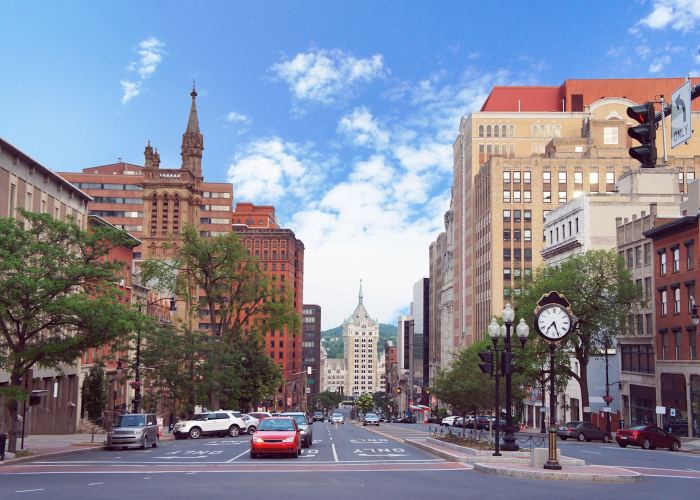
Albany, the capital of New York, boasts a rich architectural heritage that reflects its historical significance. From grand Victorian mansions to modern skyscrapers, the city’s buildings showcase a diverse range of architectural styles.
Architectural Styles
Albany’s architecture is a testament to its long and varied history. The city’s oldest buildings, such as the Schuyler Mansion and the Ten Broeck Mansion, are examples of Dutch Colonial architecture, a style characterized by its gambrel roofs and brick construction. The 19th century saw the rise of Victorian architecture, with its elaborate ornamentation and colorful facades. Notable examples include the Governor’s Mansion and the Albany Institute of History & Art. In the 20th century, Albany embraced modern architecture, as evidenced by the sleek lines and glass facades of buildings such as the Corning Tower and the New York State Capitol.
Landmarks
Albany is home to several iconic landmarks that are both architectural marvels and historical treasures. The New York State Capitol, a Beaux-Arts masterpiece, is the seat of state government and one of the most recognizable buildings in the city. The Albany City Hall, built in the Second Empire style, is another architectural gem that houses the city’s government offices. The Cathedral of the Immaculate Conception, a stunning example of Gothic Revival architecture, is the seat of the Roman Catholic Diocese of Albany.
Preservation and Restoration
Albany is committed to preserving and restoring its historic buildings. The city has established several historic districts, including the Washington Park Historic District and the Park South Historic District, which protect and maintain the architectural character of these neighborhoods. The Albany Preservation League, a non-profit organization, also plays a vital role in advocating for the preservation and restoration of historic buildings in the city.
Economic Development: Albany
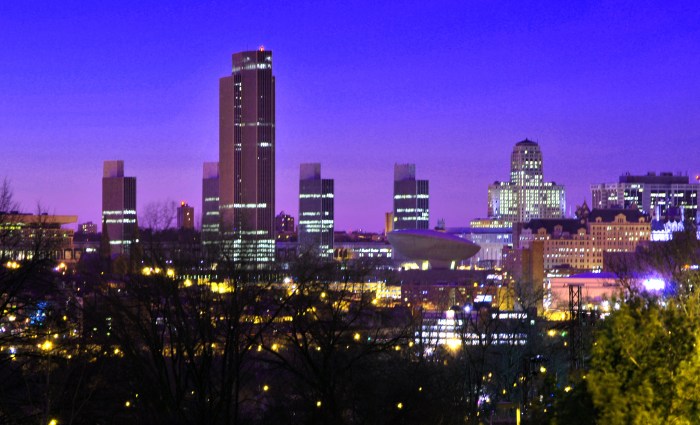
Albany’s economy is diverse, with key industries including healthcare, education, government, and technology. The city is also a major transportation hub, with a strong infrastructure and a well-developed network of roads, rails, and air transportation.
Albany’s economic development has been significantly impacted by technology and innovation. The city is home to a number of research institutions and technology companies, and it has a strong entrepreneurial ecosystem.
Albany, a beautiful city in the Caribbean, offers breathtaking beaches that rival the best beaches in the Caribbean. From the pristine sands of Cable Beach to the secluded coves of Clifton, Albany’s beaches provide a perfect escape for sunseekers and beach lovers alike.
After a day spent basking in the Caribbean sun, visitors can explore Albany’s vibrant city center, offering a blend of history, culture, and modern amenities.
Key Industries
- Healthcare: Albany is a major healthcare center, with a number of hospitals and medical research institutions.
- Education: Albany is home to a number of colleges and universities, including the University at Albany, SUNY.
- Government: Albany is the state capital of New York, and it is home to a number of government agencies.
- Technology: Albany is a growing tech hub, with a number of technology companies and research institutions.
Infrastructure and Transportation
Albany has a strong infrastructure and a well-developed network of roads, rails, and air transportation.
- Roads: Albany is located at the intersection of two major highways, I-90 and I-87.
- Rails: Albany is a major rail hub, with service to New York City, Boston, and other major cities.
- Air transportation: Albany International Airport (ALB) is a major airport, with service to a number of domestic and international destinations.
Technology and Innovation
Albany’s economic development has been significantly impacted by technology and innovation.
- Research institutions: Albany is home to a number of research institutions, including the University at Albany, SUNY, and the SUNY Polytechnic Institute.
- Technology companies: Albany is home to a number of technology companies, including GlobalFoundries and Regeneron Pharmaceuticals.
- Entrepreneurial ecosystem: Albany has a strong entrepreneurial ecosystem, with a number of incubators and accelerators.
Demographics and Population
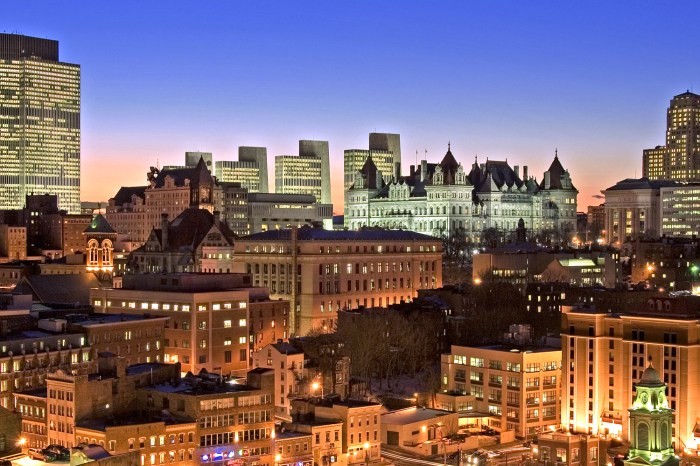
Albany’s population is a diverse mix of individuals from various backgrounds, age groups, and socioeconomic levels. The city’s demographic makeup has a significant impact on its cultural heritage, economic development, and overall well-being.
Age Distribution
Albany’s population is relatively young, with a median age of 34. This youthful demographic contributes to the city’s vibrant and dynamic atmosphere. The city has a significant population of college students, young professionals, and families.
Income and Education Levels
Albany’s median household income is slightly above the national average. The city is home to a well-educated workforce, with a high percentage of residents holding college degrees. This educated population supports the city’s thriving research and technology sectors.
Diversity and Inclusion
Albany is a welcoming and inclusive city that values diversity. The city has a significant African American, Hispanic, and Asian population. Albany is committed to promoting equity and social justice, and it has implemented various initiatives to foster inclusivity.
Population Trends
Albany’s population has been relatively stable in recent years. However, the city has experienced a slight decline in population since 2010. This trend is expected to continue in the coming years due to factors such as the aging population and the migration of younger residents to other metropolitan areas.
Tourism and Recreation
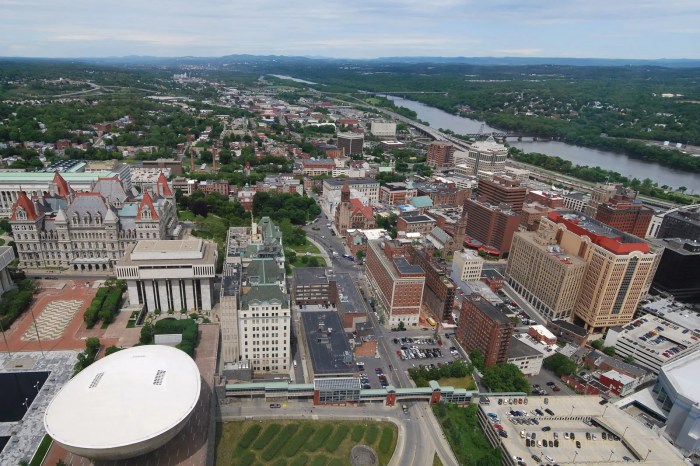
Albany offers a blend of historical charm, cultural attractions, and outdoor recreation opportunities. Visitors can explore the city’s rich past through its historic sites, visit world-class museums, and enjoy scenic parks and waterfront areas.
Museums and Cultural Attractions, Albany
Albany is home to several notable museums, including the New York State Museum, which showcases the state’s natural history, cultural heritage, and science. The Albany Institute of History & Art features a diverse collection of American and European art, as well as artifacts from the city’s past. The USS Slater, a historic destroyer, is permanently docked in Albany and offers tours to the public.
Parks and Recreation
Albany offers a range of parks and outdoor recreation areas, including Washington Park, a sprawling urban oasis with gardens, a lake, and a carousel. The Albany Pine Bush Preserve, located just outside the city, is a vast natural area with hiking trails, wildlife viewing opportunities, and historic sites. The Hudson Riverfront Park provides scenic views of the river and offers opportunities for kayaking, fishing, and biking.
Tourism Promotion
Albany has made efforts to promote tourism and attract visitors. The city has developed a “Discover Albany” initiative, which includes a dedicated website, social media campaigns, and promotional events. Albany also partners with local businesses and organizations to offer package deals and discounts for visitors.
Final Thoughts

As we conclude our exploration of Albany, it is evident that this city is a captivating blend of historical charm and modern progress. Its enduring legacy and unwavering pursuit of innovation ensure that Albany will continue to captivate and inspire for generations to come.
Essential FAQs
What is Albany best known for?
Albany is renowned for its historical significance, particularly its role in the American Revolution, as well as its vibrant cultural scene, prestigious universities, and thriving economy.
What are some must-visit attractions in Albany?
Albany boasts a wealth of attractions, including the New York State Museum, the Albany Institute of History & Art, the USS Slater, and the Corning Tower Observation Deck, offering breathtaking panoramic city views.
What is the population of Albany?
As of 2023, Albany’s population is estimated to be approximately 98,000 residents.